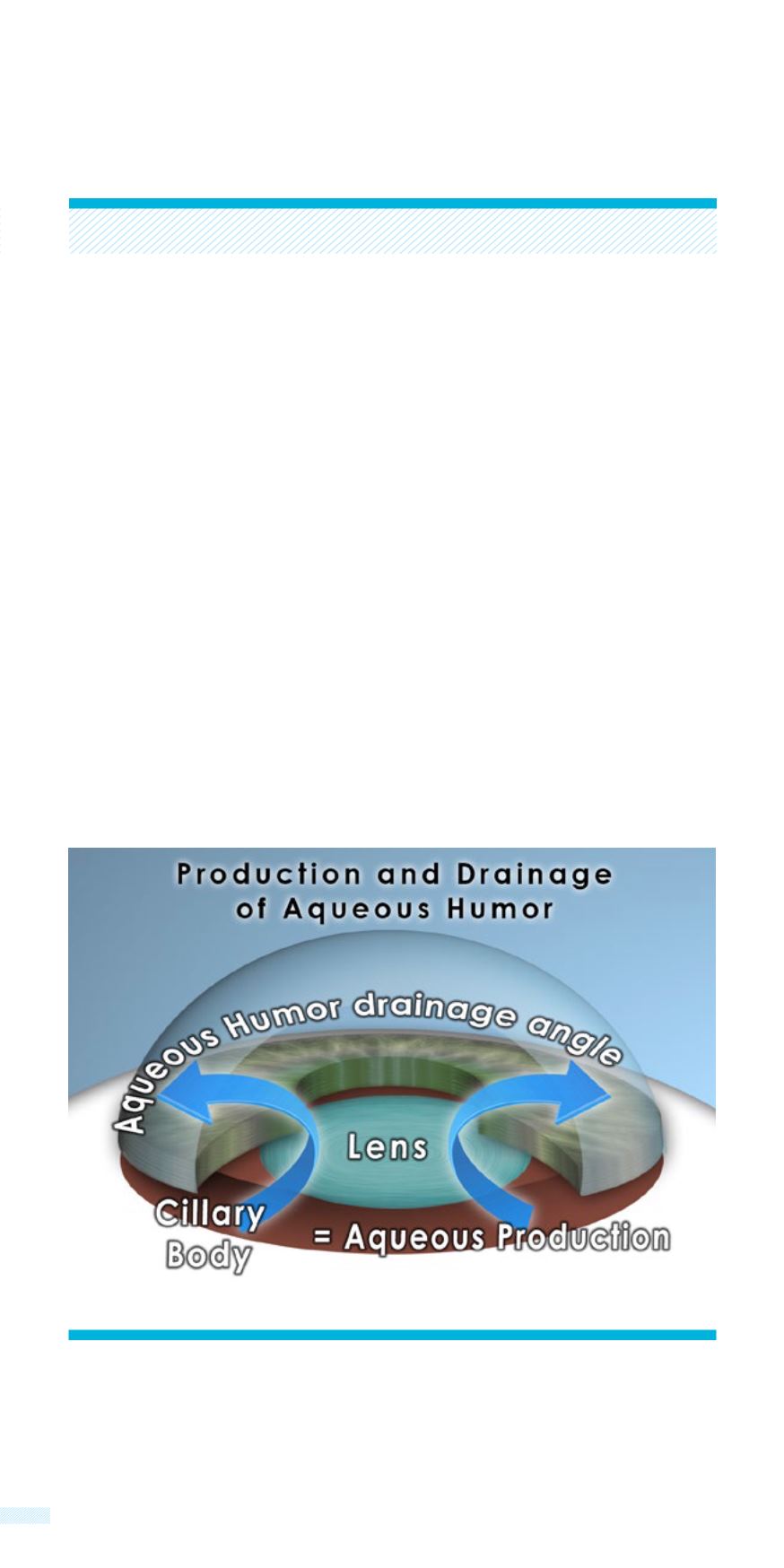
4
A certain level of pressure is necessary for the eye to maintain its
shape and function. If the
intraocular pressure
rises above a certain
limit for prolonged time it can cause optic nerve damage, either to
the optic disc directly, or by strangling the small vessels that nourish
it.
Responsible for the pressure of the eye is a fluid called aqueous
humor (or fluid), that is in constant renewal. When there is no
pathology, this constant renewal of aqueous in conjunction with its
equal removal maintains a dynamic equilibrium.
The drainage system of the eye is called
angle
and is located
between the iris (the colored part of the eye) and the interior side of
the cornea at a 360
o
circumference.
If -for whatever reason- the drainage system cannot remove enough
aqueous, then the remaining fluid accumulates thereby increasing
the intraocular pressure in the eye.
Most up to date therapies for glaucoma aim to improve circulation
within the angle, either by medication, laser or surgery.
What exactly is causing
glaucoma?


